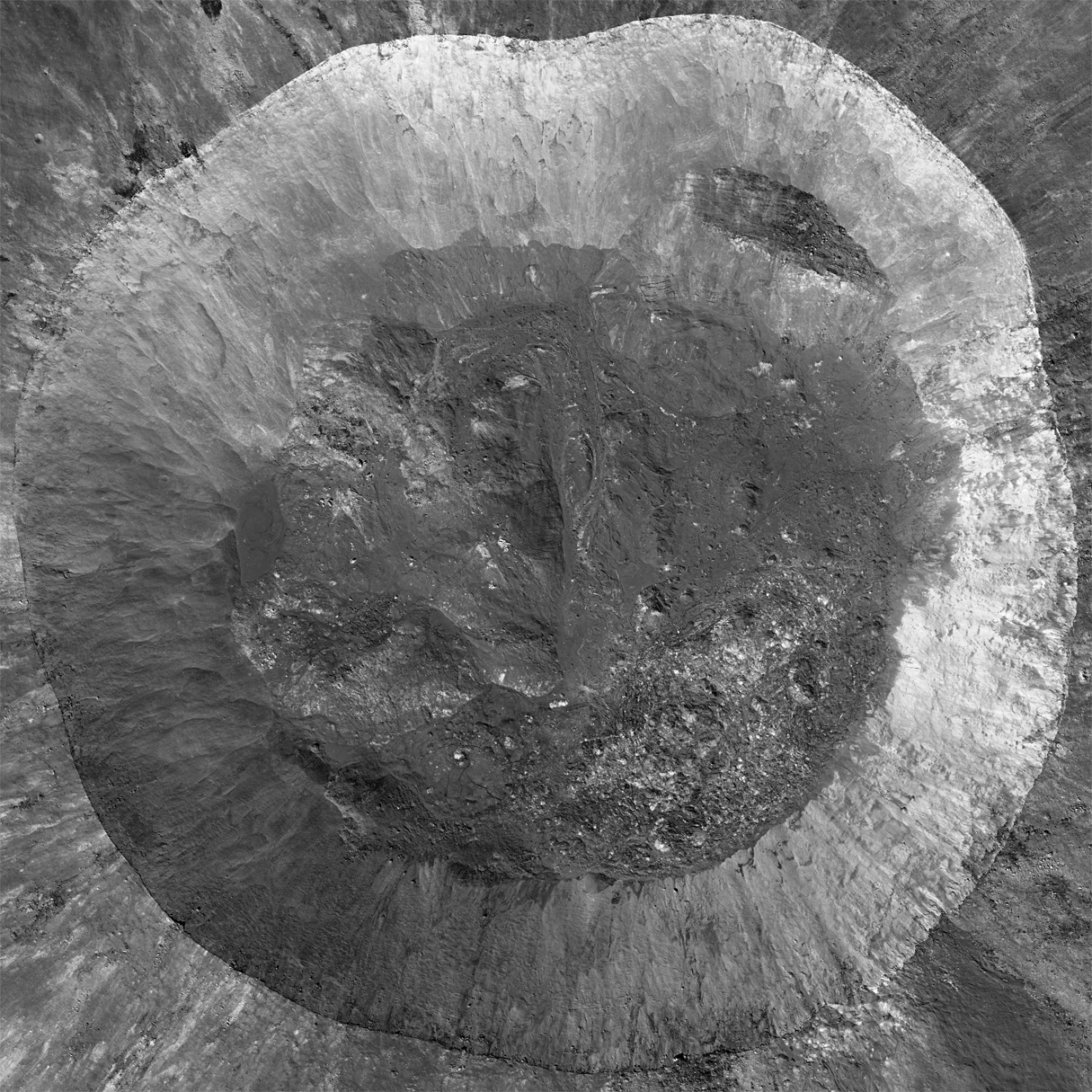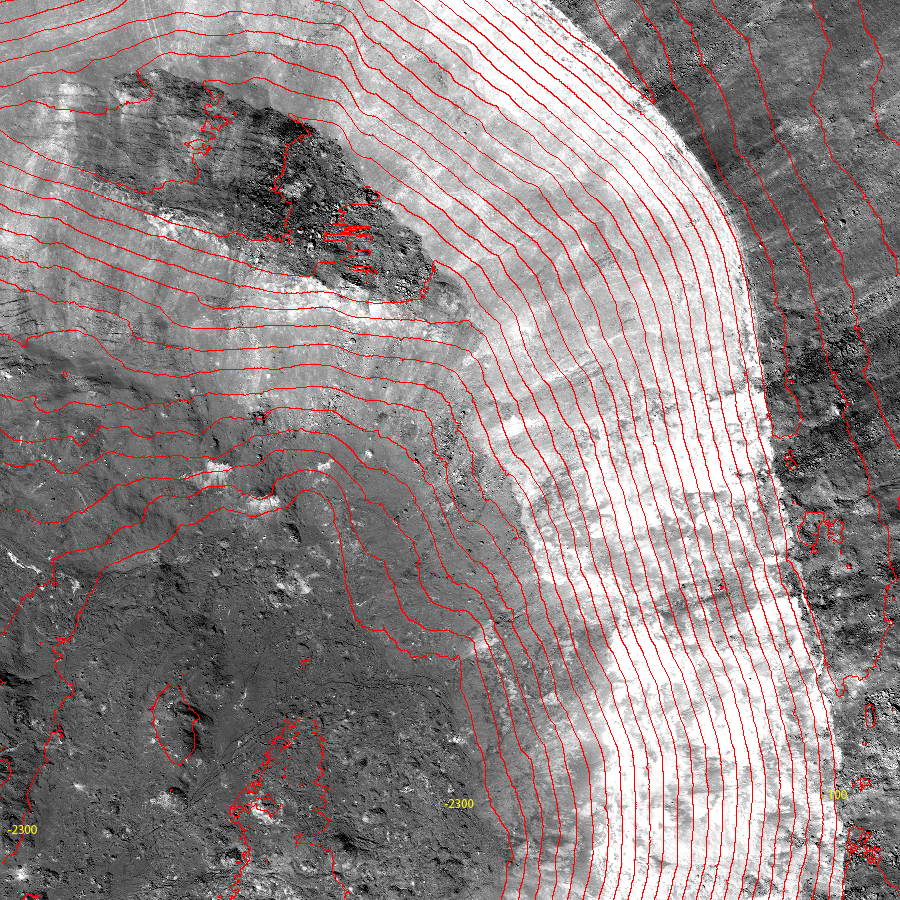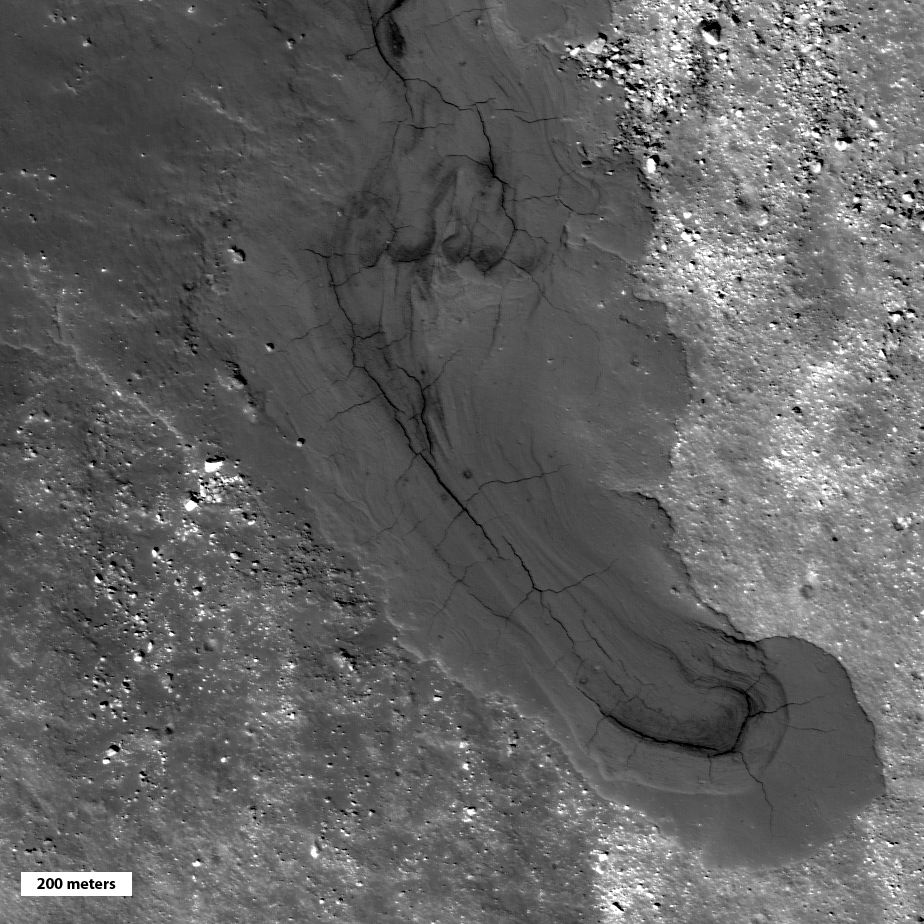
To conserve fuel, LRO was moved from its 50-km circular orbit into an elliptical orbit on 11 December 2011. As a result the spacecraft's altitude is now significantly higher in the northern hemisphere; the low point of the orbit is ~30 km over the south pole and 200 km over the north pole. This new orbit provides fantastic opportunities to acquire large area mosaics with nearly identical lighting across numerous orbits. For this Giordano Bruno crater mosaic, LROC acquired four NAC pairs (8 NAC images), from 4 orbits in a row, over a six hour period on 1 March 2012. Since LRO's polar orbits progress from east to west, the first image pair was acquired by slewing the spacecraft 6° to the west, on the next orbit only 1° to the west, on the third orbit LRO slewed 4° to the east, and the last orbit 9° to the east. The pixel scale of the images was about 1.6 to 1.8 meters, so the the images were reprojected to 1.8 meters.
How did Giordano Bruno crater form, how big is it, and when did it form? The first question is easy: it formed as the result of a hypervelocity impact of a comet or asteroid into the Moon. The crater is irregularly shaped, so its diameter ranges from about 20.9 km to 21.6 km (13.0 miles to 13.4 miles). Its walls are very steep and the floor is a mix of jagged boulders and pooled impact melt rock. Since LROC has an ability to collect stereo observations, we now have a high-resolution topographic map of the whole crater made from images acquired when LRO was in its lower orbit (50 cm resolution).
The NAC topography reveals that the walls everywhere have over 2000 meters of relief, and the northwest side of the crater has more than 2800 meters of relief. Everywhere the wall slopes exceed 30°, which is very near the angle of repose. However, in the upper portions of the walls the slopes are 40° or more. Slopes this steep can only be supported by solid material, not loose debris. Over time smaller impacts will erode the upper walls, and all slopes will be at or less than the angle of repose as the walls literally crumble. In the topographic map (above) you can also see a large bench that represents a block of wall material that slumped into the crater, but stopped about two thirds of the way down. That bench used to be at the same level as the rim, some 1500 meters up the wall!
How old is this beautiful crater? The answer is very young, but how young? We won't know the answer for sure until we obtain a sample of impact melt and can make precise radiometric age dates. The sharp, well preserved nature of the melt forms on the crater floor and flanks (above) and the sparsity of superposed craters show us that the crater is young. Scientists have counted the number of craters to estimate an age of 10 million years, or less. However with craters this young we do not know how many of the few craters that we can see were actually formed as self-secondaries: late stage material ejected from the event that formed the crater and fell back on the newly formed ejecta. These self-secondary craters, if they exist in abundance, would lead to an estimated age that is older than the true age, if not accounted for in the crater statistics.
Many fascinating details are revealed both inside and outside the crater in the NAC images. What is the dark rubbly material that occurs in discrete patches on the rim (above)? Could it be material from basaltic dikes excavated from depth and ejected up onto the rim? Or perhaps impact melt glass? This question may remain outstanding until astronauts traverse the rim of this spectacular crater. Imagine standing and looking across a 2500 meter (8200 feet) deep crater to the far wall some 21 km (13 miles) distant. For comparison the Grand Canyon is only 1800 meters (6000 feet) deep, but is a bit wider at 29 km (18 miles). Which would be more impressive? I am not certain, but I would certainly like to find out!
Examine this mosaic for yourself!
Full resolution (1.8-m pixel scale) Giordano Bruno crater mosaic
Giordano Bruno mosaic with NAC stereo derived contour lines
Previous LROC Giordano Bruno Featured Images
Delicate Patterns in Giordano Bruno Ejecta
Impact Melt Flows on Giordano Bruno
Published by Mark Robinson on 26 June 2012


